A walk around Industrial Revolution Manchester from the world's first passenger railway station to the industrial complex of Ancoats
Developments in textile manufacture in the North West of England were key drivers of the Industrial Revolution. Cotton arriving in the port of Liverpool was transported to Manchester for distribution to the towns of the North West. This walk starts at the Science and Industry Museum, the site the world's first passenger railway station linking Manchester to Liverpool. After walking to St Peter's Square it takes you down George Street to see the site of the Manchester Literary and Philosophical Society, unfortunately destroyed in WW2 but marked with a plaque. This is where John Dalton developed his atomic theory.
The walk takes you to the first example of municipal housing in Manchester. The flats of Victoria Square were built in 1889 followed by the model housing of Anita Street. These replaced the back to back terraces of the slum clearances.
The back to back terraces were built around the massive industrial complex of Ancoats which developed following the construction of the Rochdale Canal in 1804.
The Science and Industry Museum is located in grade I and Grade II listed buildings that date from that time.
Why not link this visit with a walk round the rest of the Castlefield area. This circular tour that covers some of the history of this area https://www.manchestercotton.com
For the latest information check the museum website https://www.scienceandindustrymuseum
The museum is free to enter. As you enter the museum and pass the cafe and shop you walk into the first gallery, Revolution Manchester.
One of the highlights on display is the 10hp Rolls Royce car owned by Henry Royce. He had an engineering firm in Manchester and first met Charles Rolls, a pioneer whose company sold cars in London, at the Midland Hotel on St Peter's Square.
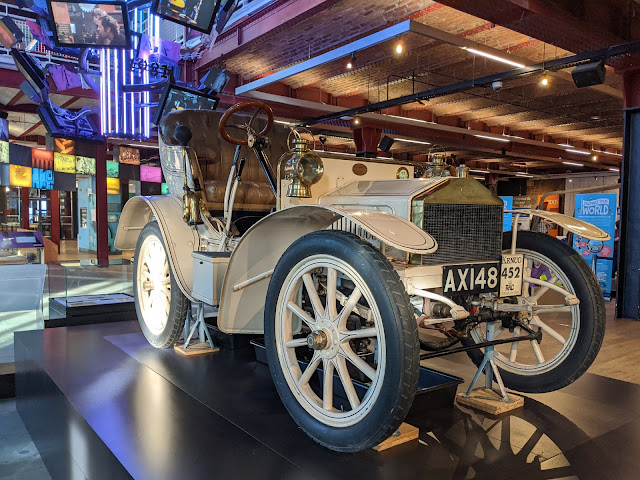 |
| Henry Royce's Rolls Royce |
Revolution Manchester also includes Baby (Small Scale Experimental Machine), a working reconstruction the first computer with electronic memory built in 1948. Its memory is based on radar technology developed during World War 2 and there may be someone on hand to talk about this along with a demonstration of the computer in action.
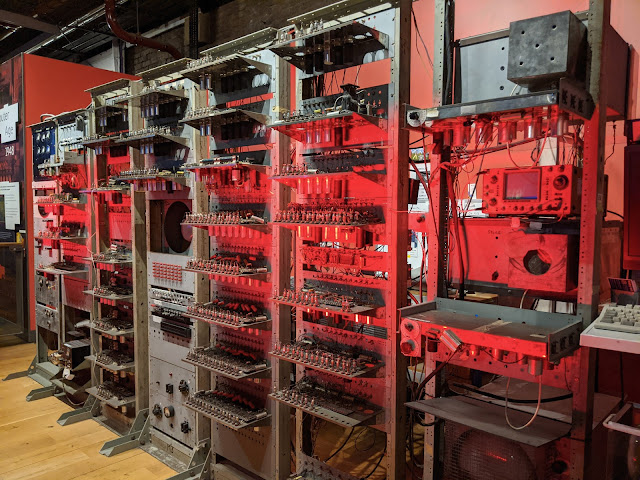 |
| Baby Small Experimental Machine |
The next gallery on the ground floor is the Textiles Gallery. Manchester was built on the cotton trade. Cotton was delivered to the port of Liverpool and transported to Manchester. There are demonstrations of the machinery in action and the museum has looms, spinning equipment and machines that were used in all parts of the process from preparing the raw cotton to weaving.
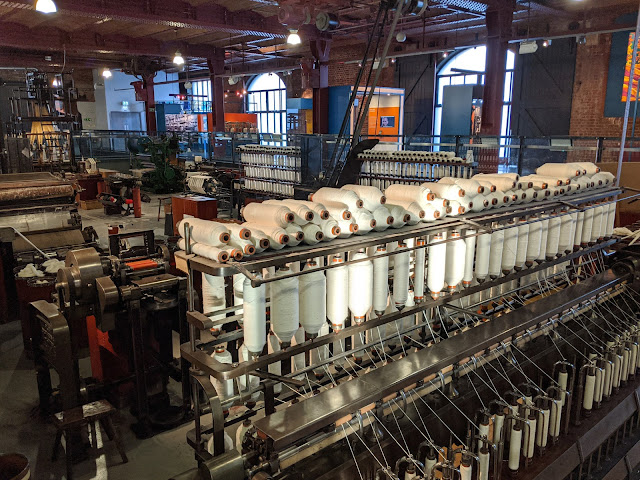 |
| The textiles gallery Science and Industry Museum |
Outside, the 1830 Railway Station and 1830 Warehouse are currently closed but the station can be seen from outside on Liverpool Road.
The museum site is an old British Rail station and in 1975 was purchased by the local council for £1.00. After redevelopment The Science and Industry Museum opened in 1983. It joined the Science Museum Group in 2018. The Science Museum Group includes the Science Museum in London, The Railway Museum in York and the National Railway Museum in Shildon rotating objects such as Stephenson's Rocket.
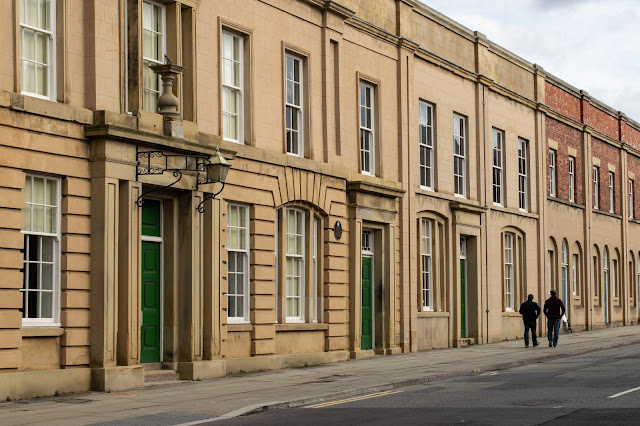 |
| The 1830 station on Liverpool Road |
Stephenson's Rocket is currently in York. Check this website to confirm https://www.railwaymuseum.org.uk
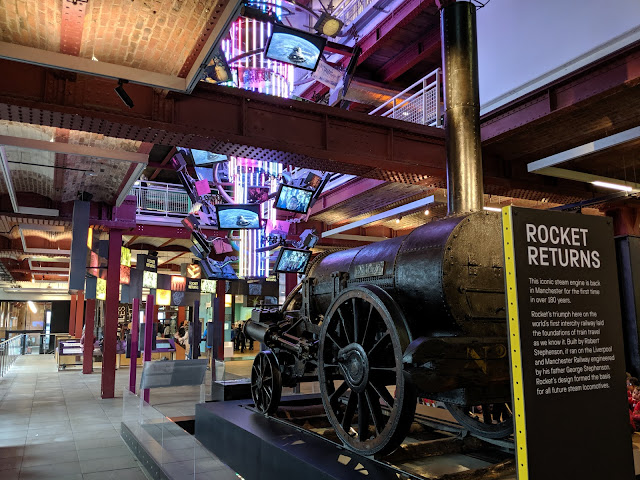 |
| Stephenson's Rocket |
Exit the Science and Industry Museum (A) and turn right. Turn left into Liverpool Road and right at the end into Deansgate. When you walk under the railway bridge turn left onto Whitworth Street (B). Follow the railway viaduct to the end then turn left into Lower Moseley Street (C) . As you walk into St Peter's Square turn right onto Oxford Road (D) and first left onto George Street until you reach the Manhattan Hotel (E). This was the site of the Manchester Literary and Philosophical Society. At the end of George Street turn left onto New York Street and when you reach the tram tracks on Moseley Street turn right.
Carry on past Piccadilly Gardens, turn right then left down Oldham Street. Cross Great Ancoats Street and join Oldham Road. Take a right onto Sherratt Street (F) and walk until you see Anita Street (G) on your right.
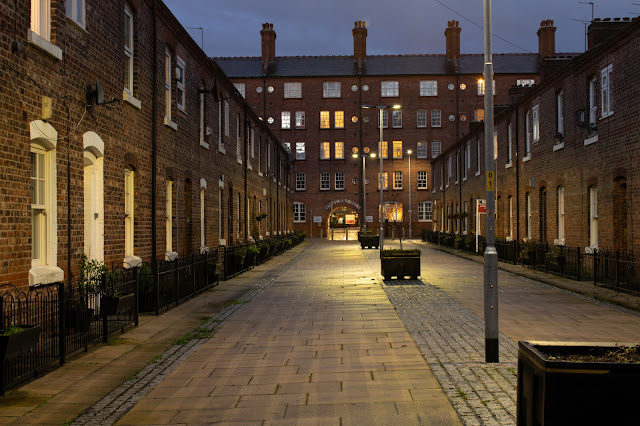 |
| Anita Street |
Carry on down Sherratt Street to Curring Room Square. Cross this square and turn left of Blossom Street then right on Murray Street past Murray's Mills (H) to reach the Rochdale Canal.
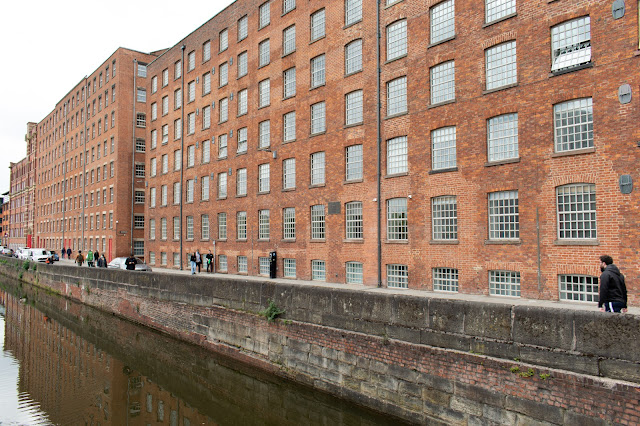 |
| Ancoats mills |

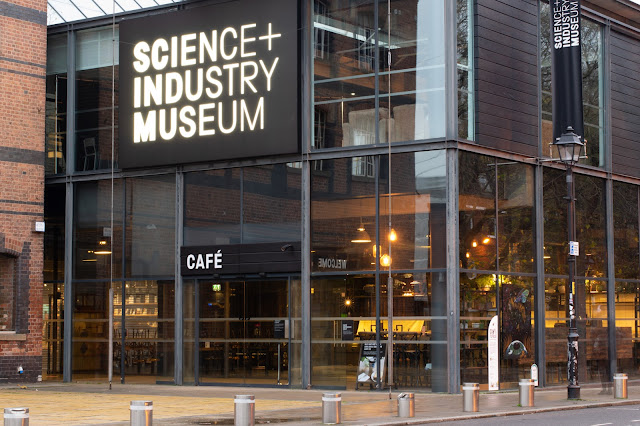



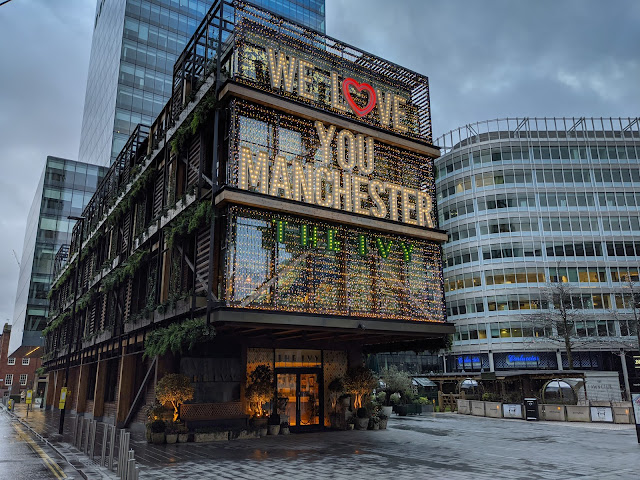
Comments
Post a Comment